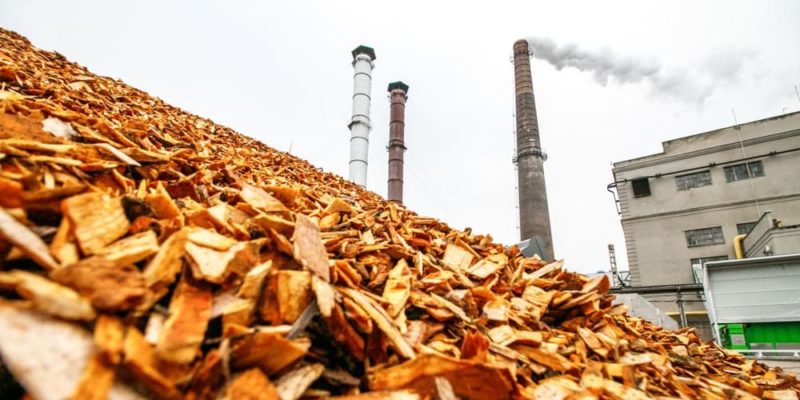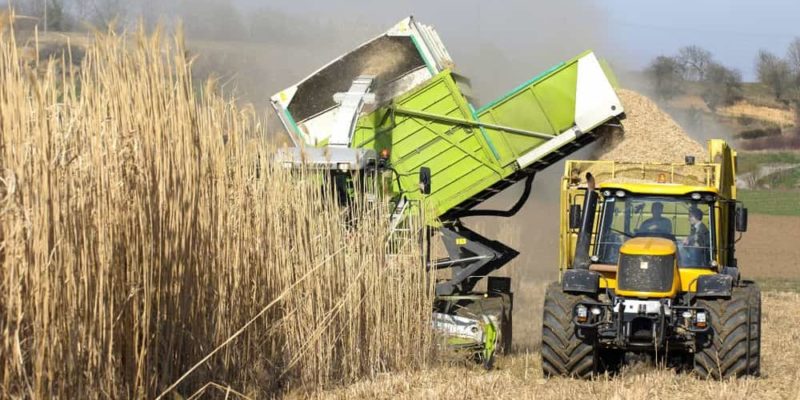We explain what biomass is, the types that exist, how it is used, advantages and disadvantages. Also, what are renewable energies.

What is biomass?
The biomass is the unit of organic matter used as a source of energy. This matter can come from animals or plants, including organic waste.
Biomass is cheaper than conventional types of energy, which are produced from fossil fuels. Furthermore, it is a renewable energy source, safer and cleaner than traditional fuels since due to its combustion method it emits less harmful gases into the environment.
Biomass is often used for heating indoor spaces, to heat water or to generate electricity or heat. It is used in both domestic and industrial settings. Furthermore, biofuels can currently be produced from biomass, such as bioethanol or biobutanol.
See also: Alternative fuels
Advantages of biomass
The advantages of using biomass as an energy source:
- It is a renewable energy source.
- Helps reduce waste volumes, with the extra benefit of giving them a use.
- It is found in large quantities.
- It does not mean a greater impact on the greenhouse effect, since when used as fuel it causes less emission of gases harmful to the environment.
- It is quite economical.
- It can economically benefit rural sectors.
Disadvantages of biomass
The disadvantages of using biomass as an energy source:
- Its scope is still limited.
- Its performance is lower than that of other types of energy sources such as fossil fuels.
- Large available land is required for its production and subsequent storage.
- It can put forest areas at risk.
- Their distribution channels are not sufficiently developed.
- It can increase the price of some foods consumed by people and animals because certain crops are used for the production of this source of energy.
- Its energy density is lower than that of fossil fuels.
Examples of biomass

Some examples of organic resources used as a source of biomass energy:
- Residues of oil in the home
- Ruminant excrement
- Wine must
- Sawdust
- Sugarcane
- Cereals such as sorghum, corn, wheat or barley
- Pruning waste
- Branches
- Beet
- Firewood
- Leftover food
- shells
- olive pits
How is biomass used?
So that organic remains can be converted into a source of energy, must undergo a series of biological, thermochemical or mechanical processes. In general, stoves or boilers are used to generate it.
When biomass is transformed and generates electricity, biofuels or heating, it is called “bioenergy”. For example, when organic waste is used for heating, bioethanol or biodiesel for the automotive industry, biokerosene for airplanes, steam or heat in the industrial field or biofuels for transport.
Biomass can be used through processes such as the following:
- Burn This process is carried out in power plants to generate heat or electricity.
- Digestion This process is carried out by certain bacteria to produce gases.
- Fermentation. In this process, certain organic remains are fermented to generate fuel.
- Heating or gassing These processes are used to generate electricity or products of different kinds.
Types of biomass
Three different types of biomass can be identified, taking into account what raw material is used for its production:
- Residual biomass. It is generated from waste produced by certain human activities. Some of its benefits are that it helps reduce the number of landfills, reduces pollution and the likelihood of fire, and is an economical option. For example:
- Agricultural surpluses Grains that were not used as food for animals or people are used as biofuels or for generating electricity. Some surpluses that are used are almond shells, animal bones or the remains of pruning.
- Natural It is produced in natural ecosystems, without human intervention. Plantation residues, branches, conifers, firewood, hardwoods or the remains of a sawmill can be used. To avoid harming the environment, they should not be used extensively.
- Energy crops. Energy is produced from crops that were specially produced for it. These crops are characterized by their resistance and their great capacity to adapt to inhospitable terrain. This group includes sorghum, sugar cane, cereals, pataca and cynara, among others.
Renewable energies
Renewable energies are those that do not use fossil fuels as occurs with the so-called conventional energies. They are those energies that use sources such as wind, sunlight, biomass or water.
One of the features of these energies is that, unlike conventional energies, their negative impact on the environment is less. Besides, can be renewed practically unlimitedly.
References
- “What is biomass and how does it work” in Sustainability for all.
- “What is biomass and what are its advantages” in Obremo.
- «10 Examples of biomass» in Examples.co.





